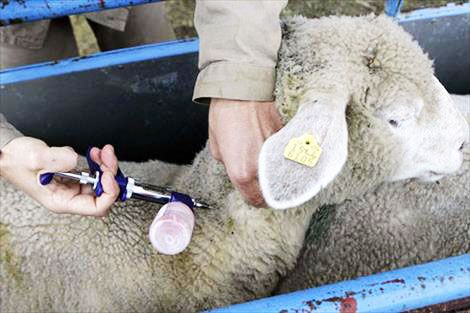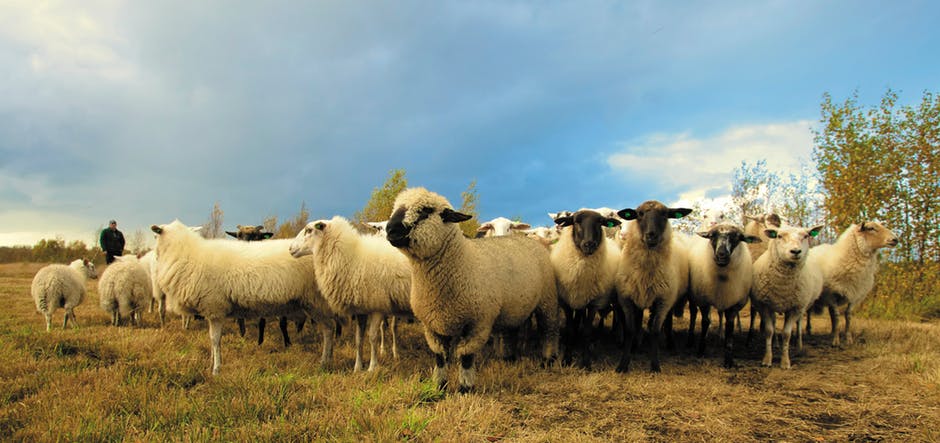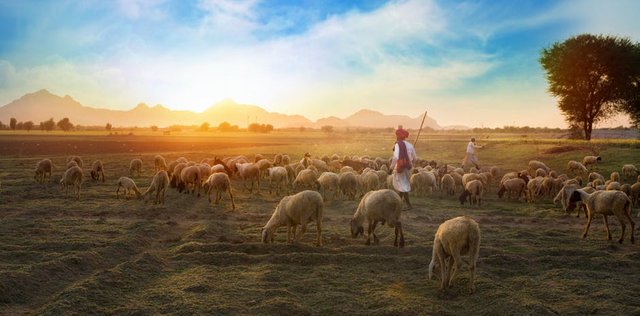(FARMS: WEDNESDAY) SHEEP PRODUCTION AND MANAGEMENT TECHNIQUES
Sheep are cloven-footed animals which are called small ruminants, and they belong to the genus, Ovis and Capra, respectively. They are ruminants like cattle because they chew the cud or regurgitate and ruminate, and have four stomachs. Sheep are found more in villages than in urban areas.
IMPORTANCE OF SHEEP
Sheep play important roles in the socio-economic and cultural lives of the people in the following ways:
(1.) They provide meat and milk to humans.It is important to note however that the meat from sheep is only used to supplement the one from cattle which are the major producers of meat for Nigerians.
(2.) They produce wool, hair and skin and manure. Sheep produce fibre (wool or hair) which is used in fabric industries. Sheep are the only species of animal known to produce wool. The Faecal droppings from sheep are used as manure to enrich the soil of its nutrients content.
(3.) Small ruminants can serve as a form of investment. Some farmers prefer to store their wealth in the form of livestock. Sheep can be converted into cask quickly by being sold when the need arises.
SHEEP BREEDS IN NIGERIA
The breed of sheep in Nigeria may be classified into three major groups
(1.) Large, long-legged long tail breed
(2.) Medium size breed
(3.) Small short-legged, short-tailed breeds
MANAGEMENT SYSTEMS IN SHEEP PRODUCTION
There are three basic systems of sheep and goat production. They are:
(1.) Extensive system
(2.) Semi-intensive system
(3.) Intensive system.
(1.) Extensive system
This is a system of production where animals are allowed to graze or browse on large areas of land that are marginal in
nature and not suitable for agricultural use. Usually, large numbers (50-200) of animals are involved of the land and what the animals benefit from grazing depends on the carrying capacity of the land. In this type of system, houses are not provided for the animals and they sleep in the open at night.
(2.) Semi-intensive system
In this system of production, the animals are released for grazing on rubbish dumps, unguarded gardens, and when they return in the evening to their owner’s homes, they are fed household wastes. The number of animals kept is usually small, less than 10. During cropping seasons, the movement of the animals is restricted to prevent damage to crops.
(3.) Intensive system
This is system of sheep production where the animals are confined and not allowed to search for food by themselves. Intensive system of production usually involves increase in one or more inputs of production so as to increase the total output from system. This system is usually associated with high costs of inputs (e.g. high labour cost, expensive quality feeds, high cost of land and cost of good foundation stock). It can only be successful i.e. profitable if high output is achieved or the product produced is highly valued with high price. Generally, management of animals in intensive system of production is better than in the other two systems.
Strategies for disease control

Source
Quarantine
Quarantine is the isolation of animals that are either infected or suspected of being infected with a diseases. Non-infected animals that are at risk of getting a disease may also be quarantined. A quarantine period is also used to
isolate new animals before allowing them to mix with a flock.
Slaughter
If a disease is infectious, affected animals can be a source of infection to others. In such circumstances, it may be
economically and technically advantageous to slaughter the infected animals to prevent further spread of the disease.
Vaccination
Vaccines are used routinely to prevent disease. A vaccine is a suspension prepared in a laboratory from the cause of the disease. When injected into an animal, the animal produces immunity to that disease, which protects the animal from that specific disease. Vaccines are easily damaged if handled improperly. Always exactly follow the instructions given for the storage and use of vaccines. Most vaccines are injected under the skin. Always use sterile syringes and needles for vaccination. Always give the correct dose by the correct route.
Movement of susceptible animals
Susceptible animals can be removed from high risk areas where infections are endemic.
Disease prevention
Preventing disease is much more effective than trying to cure sick animals. Through good husbandry practices, livestock owners can reduce the risk of diseases entering a flock. Understanding the main disease threats to a herd can
assist a producer in taking appropriate disease prevention measures, and thus lower the impact of disease problems.
Good management practices are vital to preventing diseases
These include provision of clean water and proper nutrition, maintaining clean housing, and clean pastures that reduce parasite and disease. All of these measures will reduce disease challenges.
Housing and feeding
Housing that provides protection from wind and rain, is easily cleaned and is well ventilated is preferred to warm, wet and airless conditions. Feed racks should be used to avoid contamination of feed with faeces and urine.
Drenching and spraying
The build-up of parasites is likely to occur where sheep and goats are kept in intensive conditions. Regular practice of sanitation measures such as manure removal or rotation of grazing areas or paddocks can assist in disease control.
Record keeping
Records keeping in farm animal production are very important because it can aid decision making in the farm. Example of records that farmers need to keep include mating record, lamb and kid birth record (Note that calf is a young cow; lamb is a young sheep and kid is a young goat); weaning record; health record; feed and drug acquisition record; sales record; fattening record and milking record.

